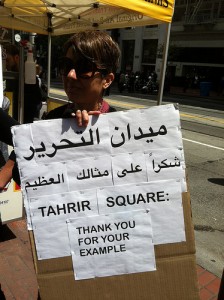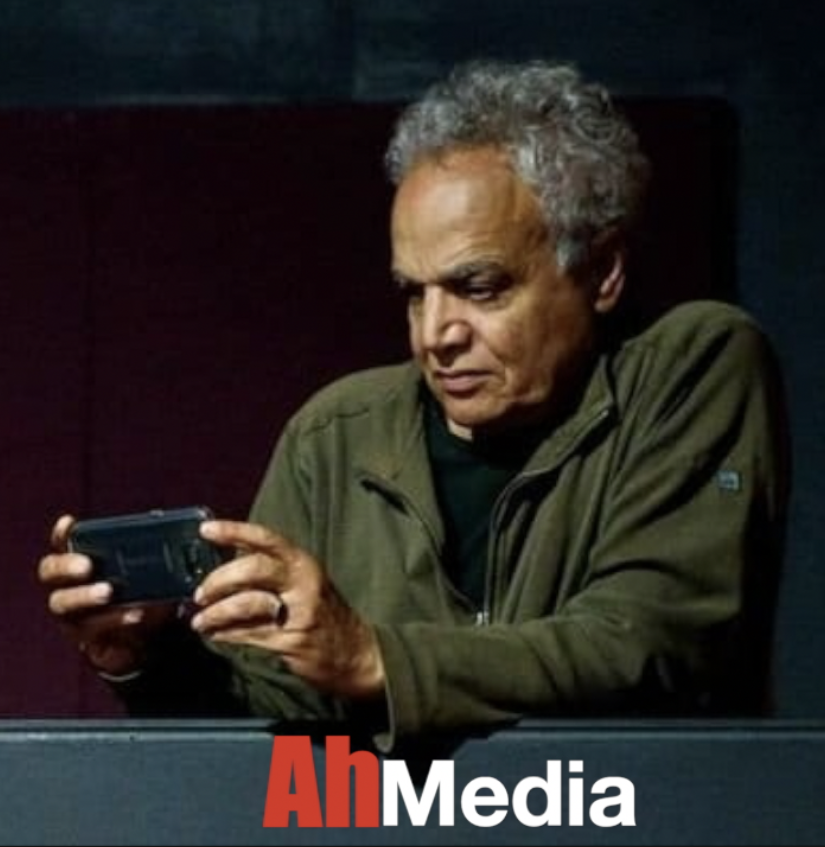
Ahmed Tharwat
On my last visit to Egypt, as I landed at the airport I noticed that Egypt has changed. Security were screaming the names of VIPs or travellers who have connections. I went through the check out. “Do you have anything in these bags,” asked the airport security?
“Not really a few gifts and my underwear,” I joked. Go ahead, he ushered me through the gate with a smile. This was the last smile I saw in Egypt throughout my trip. I asked the taxi driver to take me to Tahrir Square.
“For what sir? Nobody goes to Tahrir Square anymore, only Al-Sisi supporters,” he whispered.
Take me there anyway, I requested. I wanted to see the place where the revolution started, where the Egyptian popular uprising that erupted on 25 January resulted in the birth of a nation. The place where millions of Egyptians found out that Egypt is their own country and not Mubarak’s and his family’s.
This revolution for dignity didn’t start from nothing, it started from this square, Tahrir Square (Liberation Square). The famous square is a major public focal point in Downtown Cairo. It combines all the contrasts in Egypt, from the Egyptian Museum, to the Hilton Hotel, and is surrounded by elegant buildings that were modelled as the Paris of the Nile. It also has the biggest public bus station, where thousands of Egyptians congregate every day to go to work or return home. It gained its prominence in the 19th century when another Mubarak – Ali Pasha – was commissioned by Egypt’s ruler at the time. Ismail Pasha, and charged with remodelling Cairo. And so it was named Ismailia Square. The square’s name was changed to Midan Tahrir (or Liberation Square) after the first Egyptian Revolution of 1952.
The square has been the traditional gathering place for Egyptians with a grievance – from the bread riots of 1977 to the protests against the US-led invasion of Iraq in 2003. The square had been the symbol of the Egyptian regime for years, at least until the 1972 general strike, when the midan (square) became the focus of the student movement and opposition to the El-Sadat regime.
It was 24 January 1971, which witnessed a dramatic escalation in the confrontation between students and the El-Sadat government. Students discovered that the leaders of a sit-in at Cairo University had been arrested. Some 20,000 infuriated students headed towards central Cairo, where security forces failed to disperse them and stop them from reaching Tahrir Square. This was the first time President El-Sadat had to face street riots, and it set a precedent, which he never forgave or forgot. I was a student who had just moved to Cairo from a small village in the Delta, politically fragile, and who had never participated in any meaningful way in politics. They announced in school that there was a general strike in Tahrir Square, and it was also a day on which I witnessed my first taste of political life.
Against the wishes of my parents and the rest of family, I decided to go, not to participate in the general strike, but simply to be there. I walked the short half mile from my house through Qasr Al-Eini Street, people were coming from everywhere, no chanting, no conversation, just slow steadfast movement, as if something big was about to happen.
Once I got to the square, where there were already thousands of people, we congregated at the centre around the most elegant public fountain in Egypt (which is no longer there), surrounded by 10,000 students chanting, joking, and talking. A cold night was falling, the air was thick. Students started climbing walls and posts, bringing down advertisements billboards and pictures of El-Sadat and his family, and all were consumed by a huge camp fire.
It was like Woodstock without the drugs and sex. As the night went on, the big crowd broke down into smaller groups, and people with different grievances and different interests started forming their own groups. They broke away from the centre where the hardcore protesters were, and the further you were from the centre, the more inclined you were to leave on your own.
As people started trickling out of Tahrir Square, you didn’t notice this attrition, and the crowd that had reached into its thousands, was now a few hundreds. These were the hardcore ones and they had no plan to leave. I wanted to see it to the end; the square was surrounded by thousands of national security forces and riot police. People could leave, but there wasn’t anyone coming to replace them. At about 3am, a high ranking police officer approached the crowd, and from a short distant he gave his order via a loudspeaker that the crowds had seven minutes to leave the square. The crowd cheered a show of their defiance.
Everyone looked at each other to feel the mood. Things were tense, the organisers asked the crowd to sit next to each other and hold hands in confrontation against the police forces. At this point, you had no option but to stay with the group. Rows of police officers equipped with riots platoons and full gear started moving closer. The group chanting started rising “Belady … Belady” to rally everyone to stay.
The security forces seemed undaunted kept getting closer. “We are all Egyptians, we are all Egyptians,” chanted the crowd, although no communication was taking place. “They don’t speak our language,” a protester joked. The stakes were so high, and one’s own survival now depended on everyone else’s. A few minutes later, and without any warning, all the lights in the square went off and tear gas was sent flying everywhere.
Security forces quickly charged in concert. No amount of patriotism can keep those hardcore protesters together; you lose your sense of place, you don’t know who is next to you, your connection with your group breaks down, and now all that is left for you to do is to run away from it all.
As I was terrified, I saw a young female student whom I had never seen before, tremble and fall inside the public fountain, and five or six security forces descended on her, beating her with such brutality I never seen before. I stopped and dragged her away, and we both ran away, although we never spoke and I never saw her again. That day, on 24 January 1971, at about 4am, I realised that in Egypt, our government eats its own children like wolves, and my sense of Egypt was never the same again.
Ahmed Tharwat is host of the Arab-American TV show Belahdan. His articles are published in national and international publications. He blogs at Notes From America, on www.ahmediatv.com. Follow him on Twitter @AhmediaTV
